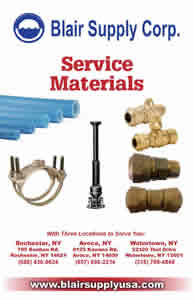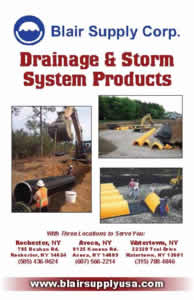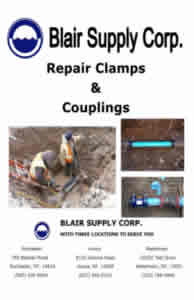Blog
Sewer Line Repair Methods & Techniques: an Overview
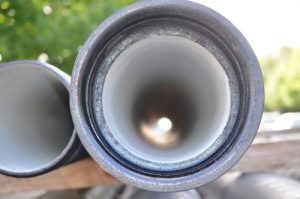
If it’s on public property, thankfully your local government will take care of it. It is important that the municipal water and sewer system functions like clockwork, which means that the repair should be completed shortly.
The situation can be more or less complex, which is why you need to be able to respond quickly and start dealing with it as soon as possible, whether you have a small crack or need a water main replacement. Luckily, there is a versatile offer of underground utility equipment and supplies for any application. Professionals order clamps for sale from reputable manufacturers such as Fernco or Smith Blair as these are convenient and durable solutions to have on hand for various types of pipe repair.
But what is the best solution for sewer line repair? How do you decide on sewer line repair methods and techniques? There are a variety of factors that go into which repair method is best for a given situation, such as whether it is possible to replace the sewer line without digging. We’ve listed some of the most popular methods below.
Traditional Sewer Line Replacement
When most homeowners and property owners think about replacing a sewer line, they envision large ditches, heavy machinery, and destroyed landscapes. This is because traditional pipe replacement involves digging a ditch along the entire length of the pipe line that needs to be replaced, removing it and replacing it with the new set of pipes. The advantage of this method is often it is the easiest because you can inspect each pipe after it is replaced to ensure the installation has gone correctly and that the new pipe is in the proper position and won’t fail.
This may be the easiest solution, however, if the sewer pipe runs under a building, it may not be the most cost-effective solution because everything will have to be replaced – building and landscape. In these cases, it may make more sense to choose a different method of pipe line repair over a traditional sewer line replacement.
What is trenchless sewer repair?
Trenchless sewer repair is a method of pipe repair that replaces a water system without digging a trench or ditch. In many cases, trenchless repair is the best method of pipe line repair because it is less invasive than traditional pipe repair and more cost-effective. There are many types.
Pipe repair clamps
Clamps are a suitable method of trenchless sewer repair when you have small cracks and slow leaks on your hands. Manufacturers in the field offer a wide selection of repair clamps for sale:
- Fernco offers high-performance clamps for use above or below ground
- Full circle stainless steel Smith-Blair repair clamps which can be used for all types of industrial and commercial applications
- Strong, industrial grade Ford repair clamps that are resistant to corrosion
- Hymax repair clamps for innovative solutions, and more.
To place a clamp around the leak site, the plumber will most likely dig a small hole to reach the site of the leak. After tightening the clamp down and sealing off the crack completely, they will proceed to refill the hole.
Using repair clamps for pipe repair is beneficial for several reasons, mainly because it is a quick and inexpensive process that saves you valuable resources and causes minimum or zero damage to your yard.
How long will a pipe repair clamp last?
A pipe repair clamp is designed to last as long as the rest of the plumbing structure. It is a fast and cost-effective solution that brings long-term results if the application is performed properly, preferably on behalf of a qualified professional.
A cured-in-place pipe (CIPP)
CIPP is a seamless, pipe-within-a-pipe system with the capability to fix the older pipes. A polyester or fiberglass liner is inserted or pulled into a damaged pipe to either reinforce or create a new piping system. It is usually done from a manhole or an excavation point.
The new liner can be inserted using water or air pressure. As the resin cures from the air pressure or the heated water, it forms a tight-fitting, joint less and corrosion-resistant replacement pipe. This leaves a new, strong inside surface of the existing pipe system.
Pipe bursting
Pipe bursting involves breaking apart the original sewer line with a bursting head. This technique is done by digging two small holes at the beginning and end of the pipe in order to access the existing sewer line.
A special type of drill called a bursting head is then pushed through the existing pipe run. As the bursting head moves forward, it breaks apart the old sewer pipe and pushes the fragments away from the area while pulling the new pipe into place.
Directional drilling
Directional drilling is a type of pipe replacement that involves digging a new tunnel for the sewer pipe several feet under the existing pipe line. Directional drilling uses a horizontal drilling machine which bores into the ground before drilling horizontally for the entire length of the pipe that is to be replaced. Dirt and debris are removed from the tunnel, and the new pipe is inserted and connected to the existing pipe network. The old piping is then removed or left as is.
Sliplining
This method is when the new pipe system is inserted into an existing line by either pulling or pushing. The pipe is inserted in a variety of ways, depending upon both the length and material of the pipe.
With traditional sliplining, a lead-in trench must be excavated for installation. For short sections of pipe, the pipes can be joined together by special gasketed joints and welded into place. Both flexible and rigid mechanical gaskets can be used to join the sections together.
Fold and formed pipe
This method as it suggests, folds the old pipe allowing the new pipe to be inserted. The pipe folding can be done by either rolling the pipe or a fusion welded together before installation. In both cases, the new pipe is pulled into the existing pipe in the manner of traditional sliplining.
Once put into place, the pipe is expanded back into its original shape, forming a close fit with the existing pipe. Just like CIPP, the process of the pipe expansion may be accelerated by air pressure and heat.
Coatings
This type is usually used for manhole rehabilitation, coatings have evolved into specialized compounds designed for other types of environments including cement and polymer coatings. Preparation is important to the success of coating, with a clean, sound substrate necessary for either type. Before application, high pressure washing is necessary to adequately clean the pipes and remove loose materials, grease or other foreign matter from the manhole walls.
Which pipe replacement system is best?
You probably want to choose a traditional pipe system replacement when the sewer pipe doesn’t run under any buildings or parking lots. All these methods are good, and they each have their pros and cons. With these technologies, the process of repairing and replacing underground pipes has been made safer, easier and they’ve reduced time spent on fixing or repairing the pipes.
When it comes to which method is better for a given situation, the answer depends on a variety of factors, not only costs and time constraints, especially in case of major issues. In some cases, CIPP pipe lining will be the best solution but other times another type of replacement is best. If there is extensive damage to and a major issue with the water main, your plumber will discuss all the viable water main replacement methods with you.
Is trenchless sewer line replacement good?
Trenchless line repair is usually chosen when the costs of the traditional pipe replacement method, including restoring landscape and repaving are higher than the trenchless option. In addition, on private property, home and business owners prefer trenchless sewer line repair when they can’t afford to have their plumbing system inoperable for long periods of time.
Your trusted supplier of pipe repair equipment & clamps for sale
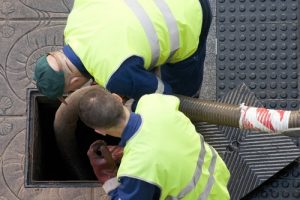
We offer a full scope of high-quality underground utility equipment and supplies, including clamps for sale from the leading manufacturers in the market, such as Fernco and Blair-Smith. Contact us today!

